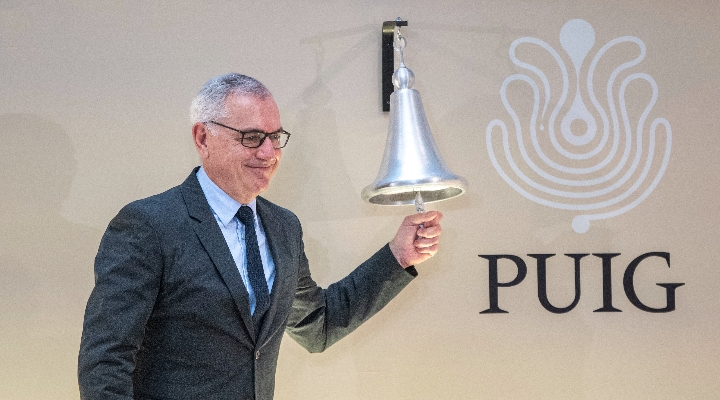From time to time, Morningstar publishes investment commentary and insight from asset managers, educational institutions, and registered investment advisers under as part of our third-party "Perspectives" feature. If you are interested in Morningstar featuring your content, please contact Online Editor Holly Cook at holly.cook@morningstar.com. Here, Howard Marks, Chairman of Oaktree Capital Management, reviews the history of stocks and bonds, explains why bonds are so fashionable now, discusses fears of a bond bubble and highlights that blanket statements about investment products or strategies are rarely helpful to investors.
While the details change, the pendulum-like fluctuation of investment styles is a constant. Fear versus greed, pursuit of safety versus aggressiveness, stocks versus bonds, and growth versus value are just a few examples of the areas in which we see this take place. In this way, the investment world proves the wisdom of Mark Twain's observation that, "History doesn't repeat itself, but it does rhyme."
The limits of the pendulum's swing are fixed, and it tends to move back and forth over the territory between them. This occurs because (a) people tend to take trends to extremes, (b) neither extreme of the pendulum's arc represents a perfect or permanent solution, and (c) there's no place else to go in these regards. Therefore, the best way to view investment trends may be through an analogy to hemlines: all they can do is go up and down, and so they do. The style mavens call for short skirts, and people fall into line, raising hemlines until they're as high as they can go. And then they drop (and so forth).
The reasons behind the rise and fall of investment fashions rarely repeat exactly, in that the details, timing and effects vary from instance to instance. But the underlying process is a recurring one. For example:
1. An idea is born when an undervalued asset is discovered.
2. Its undervaluation attracts attention, as do pioneering investors' early gains.
3. Its popularity rises, attracting more and more adherents, even as undervaluation moves to fully valued.
4. It turns into a mania or "bubble" and price becomes immaterial.
5. Eventually, the last potential buyer becomes convinced and comes on board.
6. With no one else left to convert to the trend, the bubble of overvaluation is ripe for bursting.
7. When followers experience the first price declines, disillusionment sets in.
8. One-time devotees flee en masse, and the bubble turns into a crash.
This cycle of discovery, mania and crash is best summed up by the most useful of all investment adages: "What the wise man does in the beginning, the fool does in the end." This memo will be about recurring patterns, the history of stocks and bonds as I know it, and the adage's applicability to that history.
A Brief History of Stocks
A significant milestone occurred in October 2008, attracting a lot of attention. For the first time in almost fifty years, it was reported, the dividend yield on the S&P 500 stock index was equal to the yield to maturity on the US 10-year Treasury Note. People knew this meant stocks had cheapened, but it took an understanding of history to grasp the real significance. The truth is that stocks, like other investment media, tend to go in and out of style, and this was just one more example of the latter.
Prior to the 1950s, common stocks were viewed as a speculative, inferior (that is, junior) asset class. For that reason, stocks had to pay higher yields than bonds in order to attract buyers - of course a riskier asset should yield more. In fact, most states had laws restricting holdings of stocks in fiduciary portfolios. This attitude towards stocks largely traced from the speculative stock bubble in the 1920s - featuring high-margin buying, bucket shops and shoe shine boys sharing stock tips - which collapsed in the Crash of '29. Poor economic and market performance stretching from 1929 to the end of World War II further contributed to the scepticism toward stocks.
It was only after WWII that economic performance began to support optimism. Brokerage firms led by Merrill, Lynch, Pierce, Fenner and Smith trumpeted the merits of stocks. Equity investing became widespread, and "customers' men" in local brokerage offices delivered stock investing to a great many households - I remember my mother buying 10 shares of Columbia Gas and 15 shares of Chock Full of Nuts around 1959.
I also remember a brochure on "growth stock investing" that Merrill put out in the mid-1960s, touting the desirability of rapid earnings growth and the strength of companies like IBM, Xerox, Avon, Coke, Texas Instruments and Johnson & Johnson. This idea grew into "nifty-fifty" investing, a true mania adopted by many of the large banks, among others. Ballyhoo took over from logic - excitement from value-consciousness - and these growth stocks' prices reached 80 and 90 times earnings.
The nifty-fifty stocks were tested - and found wanting - when the tide went out in the 1970s. Prosperity shifted to recession. The Arab oil embargo, a period of strong cost-push, and self-reinforcing cost-of-living adjustments created hyperinflation to which few people saw a chance for an end. Those growth stock price-to-earnings (PE) ratios went from 80 or 90 to 8 or 9. And stocks, Wall Street and the general economy went through a truly dreary decade, culminating in a BusinessWeek cover story entitled "The Death of Equities," in August 1979. For evidence of the cyclicality of attitudes toward stocks, consider its final paragraph:
Today, the old attitude of buying stocks as a cornerstone for one's life savings and retirement has simply disappeared. Says a young US executive: "Have you been to an American stockholder meeting lately? They're all old fogies. The stockmarket is just not where the action is."
In the investment world, lows in sentiment usually coincide with lows in price, and the late 1970s were no exception. Because of the dreadful environment, you could buy an existing company in the stockmarket for less than it would cost to start one. I was fortunate to become a portfolio manager in mid-1978, and thus to benefit from the subsequent recovery of investor psychology from its nadir.
In general (albeit with some prominent exceptions), the last half of the twentieth century was marked by the rise of a cult of equities, and the last quarter century was probably the best ever. From 1979 through 1990, the S&P 500 averaged an annual return of 15.4% and showed losses in only two years (4.8% in 1981 and 3.1% in 1990). Economic prosperity, rising corporate profits, a trend among consumers towards borrowing to spend, and the subsidence of inflation and interest rates all made for a most hospitable environment.
When the stockmarket's performance improved even further in 1991-99, with an average return of 20.6% and no down years, the fawning kicked up a notch. From the low of 7 reached in 1980, the PE ratio on the S&P 500 eventually exceeded 33 in 1999. The market's dramatic performance led to steady increases in the capital allocated to equities, and eventually to the tech stock bubble. It culminated in books such as the fact-based Stocks for the Long Run and the more fanciful Dow 36,000. If you asked institutional investors what return they expected from stocks going forward, I think just about all would have said 11%.
An aside: investors consistently seize upon above average returns as an encouraging sign and extrapolate them, and the 17.6% compound return on the S&P 500 from 1979 through 1999 was certainly a case in point. But rarely do they ask what gave rise to those good returns, or what it implies for the future. In essence, stock ownership conveys the benefits of owning a corporation, and stock appreciation should be powered by increases in profits. Thus long-run returns should reflect corporate growth. But as Warren Buffett has pointed out, “people get into trouble when they forget that in the long run, stocks won't appreciate faster than the growth in corporate profits".
Although that growth is the underlying source of equity profits, it is often overshadowed and obscured in the short run by trends in valuation. People took that 17.6% gain as an encouraging sign, overlooking the fact that it stemmed primarily from the rise of PE ratios described above and thus was unlikely to continue unabated. Rather than healthy performance that could be extrapolated, this swollen return should have come as a warning that valuations were unsustainable and likely to regress toward the mean. But investors consistently fail to recognise that past above average returns don't imply future above average returns - rather they've probably borrowed from the future and thus imply below average returns ahead, or even losses. The tendency on the part of investors towards gullibility rather than scepticism is an important reason why styles go to extremes.
Wharton's Professor Jeremy Siegel, the author of Stocks for the Long Run, used historical data to (a) demonstrate that there had never been a long period when stocks didn't outperform cash, bonds and inflation, and thus (b) to argue that most people of average risk tolerance should have roughly 100% of their capital in the stockmarket. But Siegel, like many laymen, failed to pursue the most critical line of inquiry. The right question to ask in the late 1990s wasn't, "What has been the normal performance of stocks?" but rather "What has been the normal performance of stocks if purchased when the average PE ratio is 33?"
Many investors were seduced by the performance of stocks in the late 1990s by the promise of wealth and a secure retirement, and by the meshing of equity participation with the allure of the technology, media and telecom industries. The results are well known: the first three-year decline for stocks since the Great Depression; a peak-to-trough decline of 51% for the S&P 500; massive losses for tech investors; shrunken 401-k [retirement savings plan] accounts; and general disillusionment with stocks.
Basically, I think equity investors had their hearts broken, as happens from time to time in the investment world. The promise of easy money turned out to be empty - as usual - and investors who had adopted overblown expectations promised "never again".
A good economy, low interest rates and resurgent general psychology brought stocks back between 2002 and 2007, but just to their 2000 peak. Versus the 11% prospective return they were sure of in 1999, by 2003 many investors expected only 6%-7% from stocks (despite the fact that they were now much cheaper). With the bloom off the rose, people looked elsewhere - to private equity, real estate, hedge funds and mortgage backed securities, for example - for the next solution. I didn't hear any investors say, "We don't have enough stocks". Their glory truly had faded.
But having recovered to their previous high, stocks were buffeted again in the credit crisis. They fell 58% from their 2007 peak to their 2009 trough. Stocks weren't singled out for punishment - non-government bonds, real estate, mortgage securities and private equity all shared the pain as panic and loss of confidence were everywhere.
With the panic now gone, stocks have recovered, but only about half their 2007-09 losses. The S&P 500 stands at a level that was first reached in 1998, meaning over the last twelve years, the average stockholder's paltry return of less than a percent a year came entirely from dividends. People talk about the "lost decade in equities" and still no one seems to feel he owns too few stocks.
A Brief History of Bonds
The recent history of bonds requires less telling. Bonds were the bedrock of investment portfolios in the first half of the last century. Along with Treasuries, utilities and corporates, business was brisk in railroad and streetcar bonds. Graham and Dodd's classic, Security Analysis, devoted more than 200 pages to "fixed-value investments" including preferred stock, of which next to nothing is heard today.
The story of bonds in the last sixty years is the mirror opposite of what happened to stocks. First bonds wilted as stocks monopolised the spotlight in the 1950s and 1960s, and at the end of 1969, First National City Bank's weekly summary of bond data died with the heading "The Last Issue" boxed in black. Bonds were decimated in the high interest rate environment of the '70s, and even though interest rates declined steadily during the '80s and '90s, bonds didn't have a prayer of standing up to equities' dramatic gains.
By the time the late 1990s rolled around, any investment in bonds rather than stocks felt like an anchor restraining performance. I chaired the investment committee of a charity and watched as a sister organisation in another city - which had suffered for years with an 80:20 bond/stock mix - shifted its allocation to 0:100. I imagined a typical institutional investor saying the following:
"We have a little money in bonds. I can't tell you why. It's an historical accident. My predecessor created it, but his reasons are lost in the past. Now our fixed-income allocation is under review for reduction."
Even though interest in stocks remained low in the current decade, little money flowed to high-grade bonds. The continued decline in bonds' popularity was fed, among other things, by the decision on the part of the Greenspan Fed to keep interest rates low to stimulate the economy and combat exogenous shocks (like the Y2K scare). With Treasuries and high-grade bonds yielding 3%-4%, they didn't do much for institutional investors trying for 8%.
As a result of a process I consider quite standard, bond allocations reached all-time lows at just the time they became needed. Other than cash and gold, Treasuries were the only asset that performed well in 2008. In fact, they benefitted from a massive flight to quality. Corporate high-grade and high-yield bonds suffered along with everything else in 2008, but less than stocks, and they've enjoyed a comparable recovery. Thus bonds have performed much better than stocks since the onset of the crisis in July 2007.
What's Going on Today?
Now, suddenly, investors seem to have awakened to bonds' attractions. This after failing to do so in time for the crisis, when holding bonds would have been of great value. Is this just another case of investors driving while looking in the rearview mirror? And are they shifting from stocks to bonds at just the wrong time?
The headlines are dramatic and the facts are clear. In just the last few weeks, we've seen newspaper stories like these: "Investors Fleeing Stocks with Cash Flow Lure JP Morgan" (Bloomberg, 16 August), "Treasury Bears Cave as Bond Yields Keep Tumbling" (The Wall Street Journal, 16 August), and "Growing Concern over Bond Bubble" (Financial Times, 21 August). Bloomberg reported as follows:
"About $33 billion flowed out of funds owning US shares this year ... about US$185 billion was sent to bond funds through 31 July, the most on record, according to the Investment Company Institute."
These statistics relate to mutual funds and their retail investors. While not necessarily the same for institutions, they are indicative of trends in investor psychology. In other words, the disaffection with stocks is continuing, and the withdrawn capital and much more is flowing to bonds. (It must be noted, however, as Tom Petruno of The Los Angeles Times pointed out on 21 August, that gross inflows to equity mutual funds are still very substantial - and larger than those into bond funds - although exceeded in this period by outflows.)
The first questions I want to tackle is "why these trends?" The answer with regard to stocks is simple. They were over-hyped in the 1990s, they disappointed in the 2000s, and investors are extrapolating the poor performance (even at lower prices) just like they previously extrapolated good performance (at higher prices). This tendency to expect trends to continue is typical of investor behaviour, especially with regard to phenomena that should instead be expected to regress towards the mean.
In the late 1990s, when stocks were performing so well and were universally expected to far exceed most investors' return needs, no one saw a reason to hold fixed-income instruments with their modest yields. Now stocks have performed poorly for a decade and expectations have been cut back. Equities are no longer considered the sure thing they were. The other day The New York Times ran an article entitled "In Striking Shift, Investors Flee Stock Market":
Renewed economic uncertainty is testing Americans' generation-long love affair with the stockmarket ... Small investors are "losing their appetite for risk." ... "Like everyone else, I lost during the recent market declines," an individual investor said. "I needed to have a more conservative allocation.” Investors pulled $19.1 billion from domestic equity funds in May, the largest outflow since the height of the financial crisis in October 2008. (22 August 2010)
Turning conservative after a crisis smacks of closing the barn door after the horse has bolted, but it's a regular feature of investor psychology.
Of course, there has to be a fundamental rationale for investor behaviour, and the current low opinion of stocks is based on the spreading belief that the recovery will be anaemic and there could be a double dip. Also behind it may be the expectation that tax rates on dividends and long-term capital gains will rise relative to the rates on ordinary income.
This article was published at the request of Morningstar, with the approval of Oaktree; please read the Important Legal Information and Disclosures






















